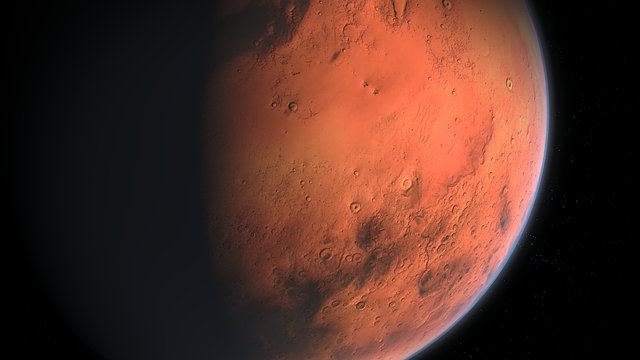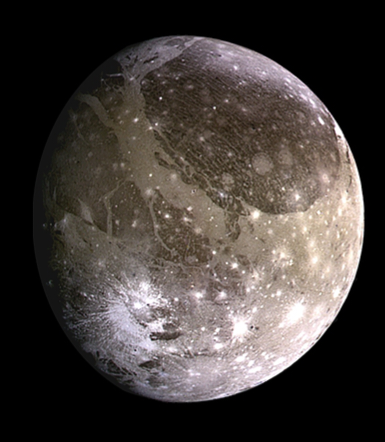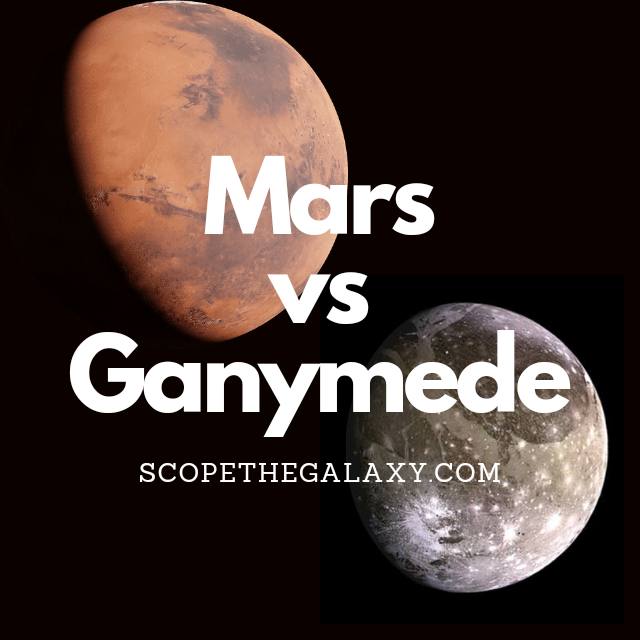*This post may contain affiliate links. This means we may make a commission if you purchase an item using one of our links*
The main differences between Mars and Ganymede is that Mars is a planet and the 2nd smallest official planet with a diameter of 6,779km whilst Ganymede is the largest natural satellite in our solar system with a diameter of 5,268km, Mars is the 4th farthest planet from the Sun whilst Ganymede is joint 5th with Jupiter and Mars is more dense than Ganymede.
There are numerous differences between Mars and Ganymede so continue reading if you want a more detailed breakdown of both entities along with their similarities and differences.
What Is The Planet Mars?
Table of Contents

Mars, also known as the red planet, is the celestial object that’s the front runner in our entire solar system to become a possible new home for us if terraformed. It is also the 4th farthest planet from the Sun and is one of 4 main line terrestrial planets (not including Pluto) in our solar system.
This means that one year on Mars will take roughly 687 Earth days and a day on Mars is roughly the same as Earth at 24 hours and 37 minutes. It’s axial tilt is also very similar to that of Earth where it is positioned around 25 degrees to the right.
It may not be the largest terrestrial world in our solar system as its diameter is only 6,779km but, it does have the most moons amongst the normal terrestrial planet where two, namely Deimos and Phobos, are currently orbiting the red planet.
Like Earth and the other terrestrial worlds, Mars does have an atmosphere, certainly more visible than that on Mercury but, when compared to Earth’s it is merely 1% of its volume.
As a result it is more susceptible to larger debris striking its surface and is unable to trap in too much heat either. This is why it’s on the colder side with a temperature of around -65 degrees Celsius on average. On the contrary its core is significantly hotter at 1,350 degrees Celsius.
Mars is probably the most explored planet outside of our own, with a multitude of rovers like Sojourner (1997–1997), Opportunity (2004–2018), Spirit (2004–2010), Curiosity (2012–), and Perseverance (2021–) that have landed on the Martian soil to explore it.
Billionaires like Elon Musk and even Jeff Bezos are trying for an opportunity to genuinely have astronauts land on the Martian soil, possibly as early as 2029 so, Mars clearly has a lot interested in its terrain, as a potential substitute for Earth in the future.
What Is The Moon Ganymede?

Ganymede is the largest of the Galilean moons – and the largest moon in our entire solar system – first discovered on 7th January 1610. The surface of this icy world is frozen and covered by two main types of landscape: young, light regions and old, crater-filled terrain. And these darker areas seem to contain a number of organic materials.
Using the Hubble Space Telescope, astronomers have found evidence of an oxygen-based atmosphere. Still, it is far too thin to support any living organisms that we know of. Based on this, it’s unlikely that Ganymede hosts life as we know it.
Estimates place Ganymede at around 4.5 billion years old (the same age as its planet, Jupiter), and its average distance from the Sun is approximately 778 million km.
Its diameter is 5,268km, making it larger than the planet Mercury. Despite this, Ganymede only possesses half the mass of Mercury at 1.48 × 10^23kg, so it is still classified as a low-density object.
Ganymede takes seven days to orbit its planet at an average distance of 665,00km, and the temperature varies from minus 112 to minus 193 degrees Celsius. In regards to the moon’s core temperature, that would be around 1,226 – 1,446 degrees Celsius.
Among the fascinating features of this ice moon is its magnetosphere. While many planets possess a magnetosphere, no other moon in our solar system shares this trait.
Measuring the changes in the magnetic fields of Ganymede and Jupiter allowed scientists to predict that salt water lies beneath the surface of this freezing world.
However, this is insufficient to support life when you factor in the other elements of this giant moon. In contrast to Europa, the rocky layer of Ganymede is not directly below the ocean, so life would have a difficult time forming both above and below the ice.
In addition, the thick layer of ice on the moon’s surface would make internal, water-based life challenging for scientists to detect.
Similarities And Differences Between Mars And Ganymede
Mars and Ganymede do have some similarities between themselves despite the numerous other differences. These common features would include the following:
- Both have a hotter central core.
- Both have a rocky, terrestrial surface.
- Both are spherical in shape.
- Neither have rings surrounding them.
- Neither have tectonic plates.
Differences Between Mars And Ganymede
In regards to the differences between these two, they include the following:
- Ganymede has a magnetosphere whereas Mars does not.
- Mars is the bigger of the two with a diameter of 6,779km whilst Ganymede’s diameter is 5,268km.
- Mars has 2 Moons whilst Ganymede has 0.
- A day on Mars is 24 hours and 37 minutes whilst Ganymede’s day is 7 days and 3 hours.
- Ganymede is tidally locked to Jupiter whilst Mars is not tidally locked to any object.
- Ganymede orbits Jupiter elliptically whilst Mars orbits the Sun in a circular pattern.
- It take Mars 687 days to orbit the Sun whilst Ganymede orbits Jupiter in 7 days and 3 hours and the Sun in 12 years like Jupiter.
- Ganymede’s axial tilt is 0 – 0.33 degrees whilst Mars’ axial tilt is 25 degrees.
- Mars’ temperature is -65 degrees on average whilst Ganymede’s temperature is around -112 to -193 degrees Celsius.
- In regards to core temperatures, Ganymede’s is 1,226 – 1,426 degrees Celsius whilst Mars has a core temperature of 1,350 degrees Celsius.
- Mars is more dense with a density of 3.93 g/cm³ whilst Ganymede has a density of 1.94 g/cm³.
- Mars’ gravitational strength is 3.721 m/s² whilst Ganymede’s gravitational strength is 1.428 m/s²
- In regards to mass, Ganymede’s is 1.48 × 10^23kg whilst Mars has a mass of 6.39 × 10^23 kg
Summary
Even if the compositional structure of Mars and Ganymede are quite similar, the two are very different in a variety of other ways which is why they’re classified under separate brackets for celestial entities.
Whether it be in regards to size, mass, their magnetic fields, the length of their days, how dense they are and more Mars isn’t all that comparable to Ganymede.

